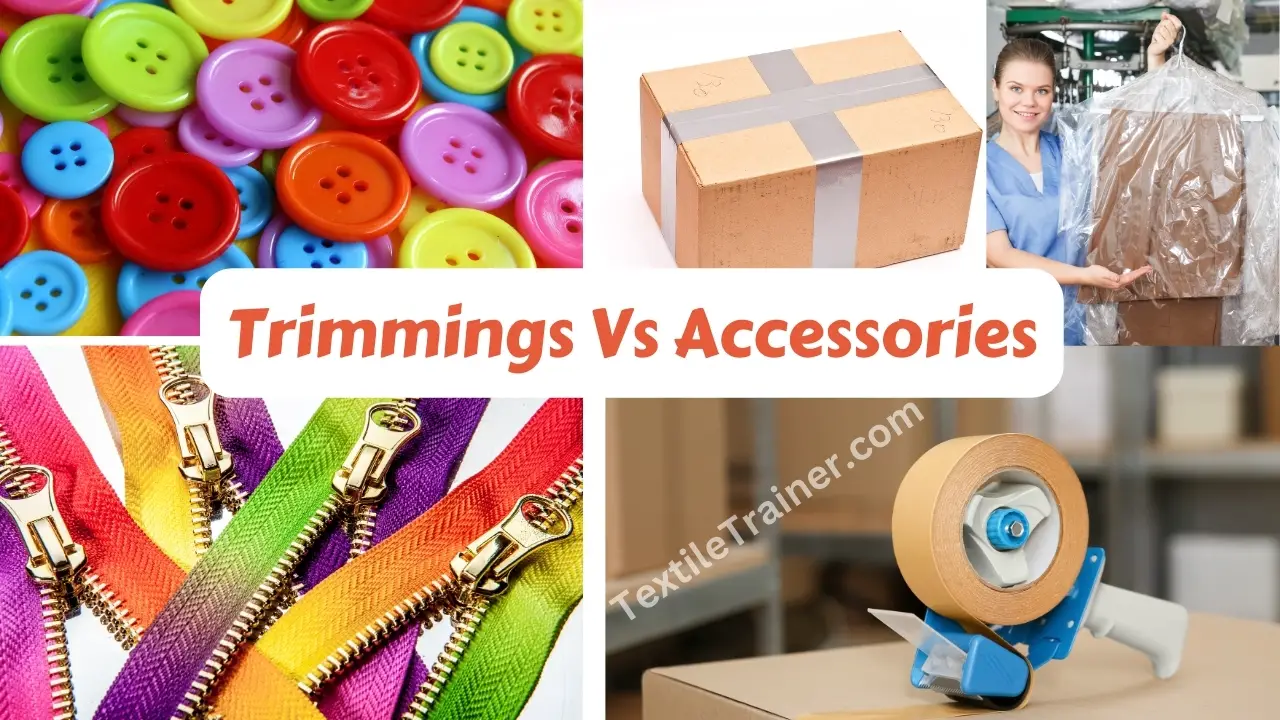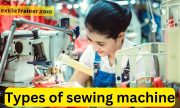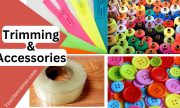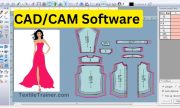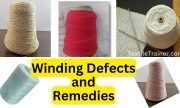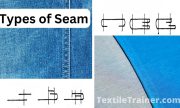Introduction:
Trimmings and accessories represent the garment. Trimmings and accessories are important terms for a merchandiser in the garment industry. Sometimes, we mix up these two terms. We think, trimmings and accessories are the same terms. But there are few differences between trimmings and accessories. In this article, I will present the differences between trimmings and accessories.
Trimmings:
All the materials except fabric required to make a garment are known as trimmings. Example: Sewing thread, button, zipper, label etc.
In garments, trimmings refer to the decorative or functional elements used to finish or embellish the edges or seams of a garment. These can include materials such as ribbons, lace, braids, buttons, zippers, appliqués, and piping, as well as more functional elements like elastic, interfacing, and lining fabrics.
Trimmings can be used for various purposes in garment construction, such as adding decorative accents, reinforcing seams, providing closures, or creating structure or shape in the garment. They can also be used to hide or cover the raw edges of fabric or to create a contrast in texture or color.
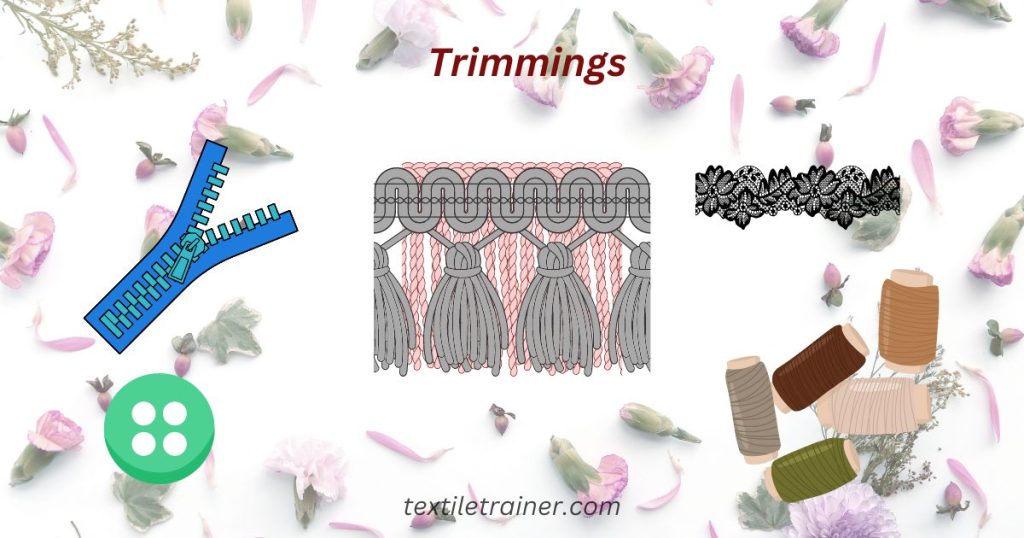
List of trimmings required for making trouser pants:
- Sewing thread,
- Lining,
- Button,
- Zipper,
- Label i.e. main label, care label, size label, price label, and composition label.
List of trimmings required for making jacket:
- Button,
- Sewing thread,
- Lining,
- Motif,
- Zipper,
- Label i.e. main label, care label, size label, price label, and composition label.
Accessories:
The materials which are not attached to the body of clothing by sewing, only used for garments finishing and packing (decorative purposes) are termed as accessories. Example: Collar stand, Carton, Hanger, Polybag, Tag pin.
In garments, accessories refer to the items that are worn or carried along with the clothing to complete an outfit. These can include jewelry, hats, scarves, belts, bags, shoes, and other items that are used to enhance or complement the overall look of the outfit.
Accessories can serve both functional and aesthetic purposes. For example, a belt can be used to cinch a loose-fitting dress for a more flattering silhouette, while also adding a pop of color or texture to the outfit. A scarf can provide warmth and comfort in cooler weather, while also adding a stylish touch to the outfit.
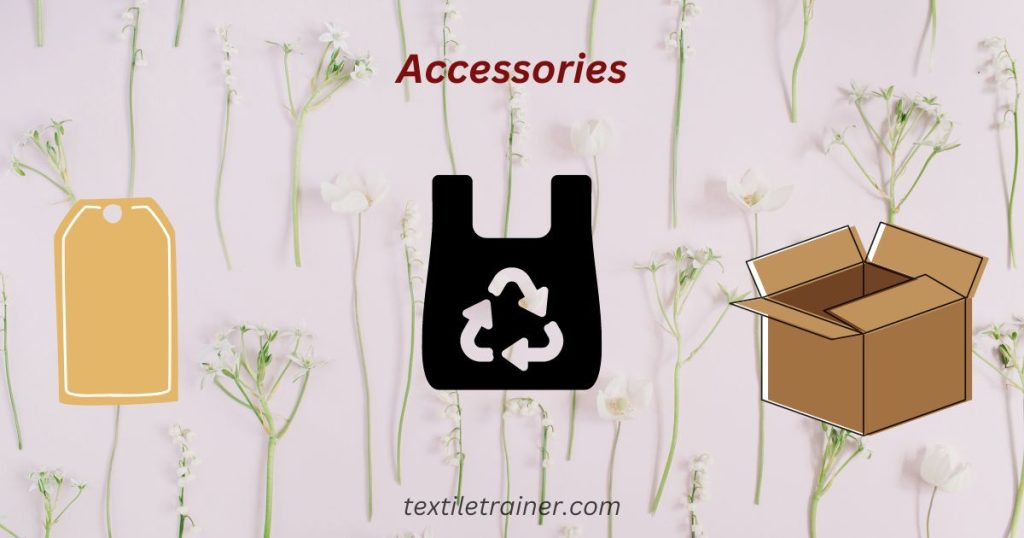
List of Accessories Required for Making Shirt, Pant, and Jacket
- Neck board,
- Backboard,
- Plastic collar insert,
- Hangtag,
- Ball head pin,
- Tissue paper,
- Polybag,
- Silica gel bag,
- Carton,
- Carton sticker,
- Safety sticker,
- String,
- Hanger
Differences Between Trimmings and Accessories:
While both trimmings and accessories are used in garments to enhance or complete an outfit, there are some differences between the two.
| S/N | Trimmings | Accessories |
| 01 | The materials which are attached with the body of a garments by sewing are known as trimmings | The materials that are not attached with the body of a garments by sewing, only use for garments finishing and packing are known as accessories. |
| 02 | Trimmings are usually sewn onto the garment and are an integral part of its construction. | They are not necessarily part of the garment itself and can be added or removed depending on the occasion or personal preference. |
| 03 | Trimmings are used as functional purpose of a garment. | Accessories are used as decorative purposes of a garment. |
| 04 | Trimmings are often limited to specific areas of a garment, such as the edges or seams | Accessories can be worn anywhere on the body or carried as a separate item. |
| 05 | Trimmings are usually selected and incorporated into the garment during the design and manufacturing process | Accessories are typically chosen separately by the wearer and may be used to personalize or customize an outfit. |
| 06 | Trimmings are often more subtle and integrated into the overall design of the garment | Accessories can be used to make a statement or draw attention to a particular area of the outfit. |
| 07 | Trimmings are often made of the same fabric or materials as the garment itself. | Accessories can be made from a wide range of materials, such as leather, metal, or beads. |
| 08 | Trimmings are often considered essential components of the garment’s design and construction, | Accessories are seen as optional additions that can enhance or complement the outfit but are not necessary. |
| 09 | In terms of cost, trimmings are often factored into the overall cost of the garment | Accessories are typically sold separately and can range in price depending on the materials used and the brand. |
| 10 | Example: Sewing thread, button, interlining, etc. | Example: Carton, gum tape, poly bag, etc. |
In summary
while trimmings and accessories share some similarities in their use in garment design, there are significant differences in their function, importance, materials, cost, and stylistic implications. In summary, while both trimmings and accessories can be used to enhance or complement a garment, they differ in their attachment methods, function, materials, and the stage of the garment’s creation at which they are added.
